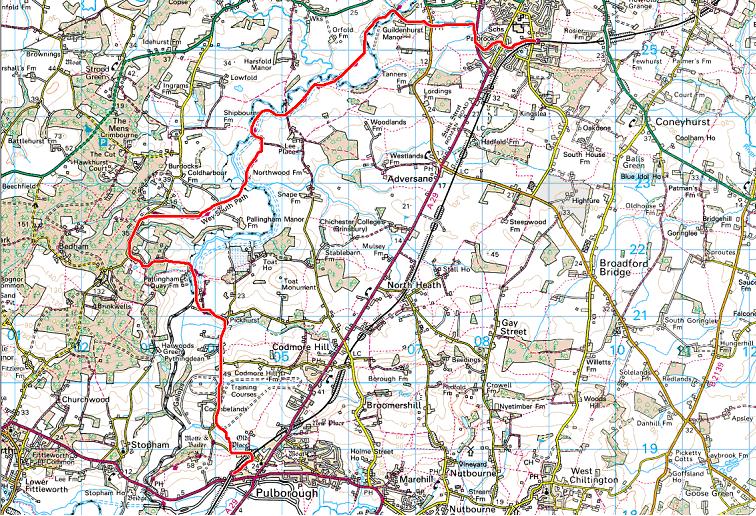Saturday 13th October 2007
Billingshurst to Pulborough
10 miles
Today we did the brilliant walk from Billingshurst to Pulborough via the
Wey South Path. We took an
early stop for a cuppa at the 16th Century
Limeburners Arms
before walking through Guildenhurst Manor and down to the river. The
waterside walk took us over about 12 bridges (we lost count) that sent us back and forth over
the river and its accompanying canal. The path is very well marked and the walk
is really interesting because of all of the canal artefacts that are being
renovated and replaced by volunteers. We passed through farmland and woods as
well as along the river bank with much of the land given over to horses.
Just outside Pulborough we came to a large training area with stunning views of the Downs
from Chanctonbury ring to Amberley Mount.
No furry wildlife today apart from a single rat and a lot of grey squirrels, although we did see our first
Fieldfares of the year, plenty of
Green Woodpeckers, plenty of farmland birds and lots of different fungi. It was very autumnal out
there today with all of the trees changing colour and dropping their leaves, but
the weather was still very warm.

The art left behind on a tree by a wood boring grub
Quince (Cydonia oblonga). This small deciduous tree is closely related
to apples and pears. The golden fruit is too sour to eat raw and so is used to
make jam and jelly or is added to apple pie to enhance the flavour.
The Sloe, fruit of the Blackthorn (Prunus spinosa). In Britain this
plum like fruit is used to make the red coloured liqueur Sloe Gin.
This illustrates nicely why the Horse Chestnut (Aesculus
hippocastanum) is so named. Where the shoots pull away from the
branch a horseshoe shaped mark is left behind, with even the nail marks showing.
The pond in Pulborough old village.